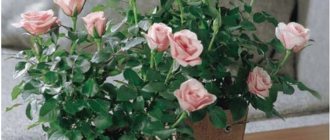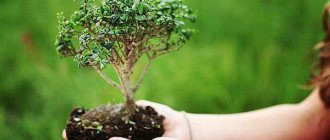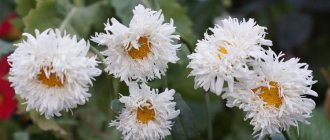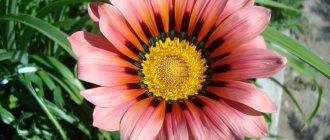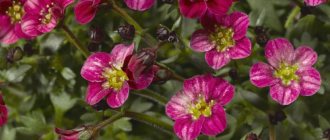- August 20, 2018
- Houseplants
- Alexander Nedashkovsky
Today, flower growers grow a wide variety of Kalanchoe varieties at home. The ornamental plant has medicinal properties. In addition, it has a beautiful appearance. Reproduction of Kalanchoe is not difficult even for inexperienced gardeners. This is probably why the plant is so common in our apartments.
Plant varieties
Throughout history, Kalanchoe has received many names - room doctor, tree of life, home healer... Our grandmothers always had this plant on their windows. Currently, there are many different species of this beautiful flower, including flowering representatives. They are the ones who are most popular. In nature, there are a total of more than 200 varieties of Kalanchoe. Only a few of them are grown at home. All of them are easy to care for and reproduce.
Kalanchoe can safely be classified as an unpretentious flower. The plants belong to the Crassulaceae family. Its homeland is the tropics, so the flowers are accustomed to long stays in wet and dry conditions. At favorable times, the leaves of the plant accumulate moisture, which they gradually use for survival. The flower takes root well in any home and does not require frequent replanting or fertilizing, which makes caring for it much easier. The plant is very resistant to pests and diseases. Even if you did something wrong and your flower began to die, you can always divide it into cuttings, which take root very easily. Reproduction of Kalanchoe is a simple process. Almost every rooted plant turns into a healthy and full-fledged flower.
Types of Kalanchoe
Many types of Kalanchoe can be grown indoors. Thus, a decorative flowering species called Kalanchoe blossfeldiana is very popular. It is a low-growing subshrub that can reach 45 centimeters in height (dwarf forms are also available). Its smooth leaves with beautiful wavy edges are dark green. It blooms very beautifully with yellow, pink, white, orange or red flowers.
Undemanding in care and having beautiful flowers is the Kalanchoe Calandiva variety, the ancestor of which was Blossfeld's Kalanchoe. This plant is not very tall, but it has many simple and double bright flowers. It blooms for a very long time. It begins in early or mid-spring and ends in autumn. After the plant stops blooming, it is recommended to trim those stems that have become elongated. Watering should be reduced and the pot should be moved to partial shade, because the plant is beginning a dormant period.
Varieties such as Kalanchoe pinnata and Kalanchoe daigremontiana are extremely popular. Their main difference from all the others is that daughter plants are formed directly on the mother leaves. Plants of this type have triangular elongated leaves and a straight stem. On the edges of the leaves, between the teeth, brood buds appear, from which the children that have roots are formed. After the baby falls, it takes root very quickly.
Also a popular decorative flowering species is Kalanchoe manginii. This variety has drooping stems on which small leaves are located. Its flowers reach a length of 2 centimeters and are bell-shaped.
Kalanchoe thyrsiflora is very unusual. It has round leaves that are double colored. So, the main part of the leaf is colored light green, and closer to the edges it smoothly turns into red. It blooms with small yellow flowers.
Kalanchoe beharensis is also very often grown. This plant is a subshrub and has erect stems. The leaves, covered with a bluish-gray coating, are triangular in shape and have wavy edges. Over time they begin to fall off.
The leaves of Kalanchoe tomentosa are greenish-silver in color and have a brownish stripe along the edge. They are covered with fluff and have an oblong shape.
The marbled Kalanchoe (Kalanchoe marmorata) has a very unusual leaf color. They are light green with dark brown large spots. The flowers reach 6 centimeters in length and are white in color.
Medicinal properties
People have long been aware of the medicinal properties of Kalanchoe. It is for this reason that previously it could be found in any home. Not only the leaves, but also the stems are used for medicinal purposes. Kalanchoe is one of the few plants that purify indoor air and destroy germs, disinfecting the room. The flower copes well with the flu virus. If now we are accustomed to using pharmaceutical products for colds and runny noses, then previously Kalanchoe was considered the first assistant. You can use it to make cold drops. The juice of the plant is also useful for wiping the nasal mucosa.
Kalanchoe has a powerful anti-inflammatory effect. It has antibacterial, hemostatic and bactericidal properties. The plant copes well with wound healing, it removes harmful substances from the body and cleanses the blood.
The medicinal properties of the flower are based on the fact that it gives a surge of strength and vigor. It is believed that the presence of Kalanchoe in the house contributes to a friendly and favorable environment.
The medicinal properties of Kalanchoe are actively used in folk medicine. The leaves are mainly used, from which juice or pulp is obtained. The plant contains a large number of biologically active and healing substances, among them it is worth highlighting organic acids, flavonoids, tannins, mineral salts, vitamins, macro- and microelements. Kalanchoe juice is used for herpes, to boost immunity, and for physical fatigue. The plant is rich in vitamin C, and therefore is indispensable for vitamin deficiency. Kalanchoe juice is used as ear drops to treat warts, trophic ulcers, purulent wounds, and burns. For sore throat, dilute it with water and gargle with the resulting solution.
Is there any harm
For all its positive properties, Kalanchoe can cause harm. Succulent juice should not be used in the following cases:
- for oncology;
- for liver damage, hepatitis;
- if you are allergic to Kalanchoe juice;
- for joint diseases.
It is necessary to take products based on Kalanchoe juice with the approval of a doctor. Be sure to follow the dosage. Taking too much of the medicine will cause diarrhea or heartburn. When used externally, the juice can damage the skin and mucous membranes.
Lighting
One of the most unpretentious indoor plants is Kalanchoe. Care after purchasing a flower is so simple that even a novice amateur gardener can handle it. The plant can be placed almost anywhere in your home as it thrives in indirect light and partial shade. You can also place the flower in direct sunlight. But at the same time, its leaves will change color slightly. Ideally, you should choose western or eastern windows, where the lighting is moderate.
For flowering species, the south-eastern and eastern direction is more suitable. In winter, the plant will need additional lighting. If a flower does not have enough light, it stretches and weakens. The upper leaves may turn pale and the lower leaves may die.
General recommendations
We suggest that you familiarize yourself with general recommendations to ensure that the plant is grown correctly.
So, take note of these tips:
- Kalanchoe is a succulent that accumulates moisture in the leaves and stem, so it is practically not afraid of dry periods, but the plant has a negative attitude towards excess moisture. The roots suffer first.
- In the warm season, you need to water the flowers with cool water after the soil has dried.
- The stem should not be filled with water, otherwise there is a high probability of the rotting process beginning.
- Excess water (including in the tray or saucer) must be disposed of to prevent rotting.
- It is necessary to provide the plant with about 10-12 hours of daylight per day. But at the same time, before flowering begins, daylight hours should be reduced to 6-8 hours, which will provoke the release of flower stalks.
- Kalanchoe loves light very much, but it is necessary to exclude the possibility of direct sunlight hitting the flower, otherwise the foliage will begin to fade.
- During flowering, that is, in winter, you should not feed the plant.
- If you use an all-purpose fertilizer for indoor flowers, you should dilute it twice as weak as indicated on the package. But when purchasing a special fertilizer for Kalanchoe, you can follow the instructions given.
- The plant should be pruned regularly to ensure that unhealthy, old or wilting parts are not removed. Their presence leads to weakening of the plant.
Growing Kalanchoe at home is quite simple, easy and quick. Follow these recommendations to do everything correctly and continue to enjoy the beauty of a flowering plant with large and lush foliage.
Watering Kalanchoe
Very often, beginners do not know how to properly water Kalanchoe. The plant accumulates liquid in the foliage. Therefore, he is not afraid of a period of drought. For example, the plant will not dry out if you leave for a while. But overwatering has a detrimental effect on the flower. In this case, it is not the amount of water that plays the main role, but another factor. When watering, the earthen ball must be well moistened. But later the excess water must be drained. In order not to overdo it with watering, it is worth developing the correct regime. To do this, it is necessary to moisten the soil after it has completely dried in the pot. Water procedures can be performed more frequently only in the summer heat. In winter, on the contrary, it is necessary to water the plant no more than once every 10-14 days. If the soil moisture is excessive, its roots will begin to rot. In addition, excessive humidity promotes the development of fungal diseases and mold.
In principle, Kalanchoe does not need to be sprayed. In winter, high humidity is dangerous for the plant. But at the same time, the flower periodically needs to be rid of dust accumulated on the foliage. To do this, you can bathe Kalanchoe in the shower or wipe the leaves with a damp sponge.
Frequent illnesses
With proper care, Kalanchoe rarely gets sick. But from time to time, the succulent can be affected by gray mold or powdery mildew.
Powdery mildew
A dangerous fungal disease occurs from excessive humidity. Kalanchoe affected by powdery mildew begins to shed its leaves and then dies completely. At the first suspicion of a disease, the gardener should begin to treat the tree of life. Powdery mildew is an infectious disease and can quickly spread to other green plants.
The sick plant must be isolated from the rest of the household. The disease is fought with fungicides Aktarofit, Fitoverm, etc.
Gray mold
It is impossible not to notice this fungus - it spreads to all parts of the plant. Brown watery spots are visible on the stems, and grayish dust accumulates in small piles on the leaves.
Gray mold affects plants that have been watered incorrectly or irregularly. That is why it is important to prevent constant stagnation of moisture in the soil. Fallen leaves must be removed from the pot to prevent the development of fungus. The soil is partially replaced, the Kalanchoe is treated with a fungicide and placed closer to the light.
Actellik and Commander are suitable medications. They treat the plant twice with an interval of 2 weeks. Solutions are prepared according to instructions
Proper pruning
For some plant varieties, pruning is an essential part of care. This is especially true for flowering species. How to prune Kalanchoe? The pruning procedure must be drastic. The flower stalks are cut off completely, leaving no extra parts. Very often, flowering greatly weakens the plant. In this case, you will have to cut off all the bad looking and old parts of the flower. At the same time, young and strong shoots can be cut off and used for propagation of Kalanchoe. In summer, flower growers recommend pinching off the top so that new side shoots appear. If this is not done, the plant will stretch.
How to prune a Kalanchoe that does not bloom? Even non-flowering forms require periodic pruning. The plant usually grows in height quickly. A too huge flower clutters up the space, so it is necessary to cut off some of the branches and the crown so that the bush grows wider. The resulting cuttings can be used for rooting. Pruning allows you to rejuvenate the plant. Young bushes look more aesthetically pleasing and beautiful.
Different methods of reproduction
Kalanchoe is a plant that reproduces very easily. You can get new flowers in a variety of ways. The process of flower propagation is so simple that anyone can handle it. Plant propagation is carried out by children, seeds, stem and leaf cuttings, and offspring. Any method always gives good results. To propagate Kalanchoe by leaf, you can even use fallen old leaves, which take root incredibly easily.
Some varieties of the plant reproduce by children. Small daughter sprouts form on the leaves of Kalanchoe. Children look very much like adult plants. They have small leaves and roots. Adult succulents most often shed such buds themselves, which easily take root in the mother pot. Later they can be transplanted into another container. If you find formed shoots on the leaves, you can safely break them off and plant them in fertile soil.
Propagation by leaves can be carried out at any time of the year. A cut adult leaf is planted in a pot with a moist substrate. It is covered with a jar or glass on top. The leaf takes root in just a few days. Soon it will become an independent plant. Sometimes part of a leaf is used for propagation. It is buried in the ground and after some time a young plant develops from it.
Major pests
In addition to diseases, Kalanchoe can be attacked by insect pests.
Aphid
It settles on the leaves of the tree of life and feeds on their juice. It can get on the plant from other crops, clothes and shoes of household members, or even fly out the window.
Small accumulations of harmful insects are removed with a solution of soapy water (combine laundry soap with water in a ratio of 1:6). A large number of aphids are destroyed with special preparations: Actarofit, Actellik, etc.
Shchitovka
Mobile small insects whose body is covered with a waxy shield. Kalanchoe affected by cabbage cannot develop normally - it misses flowering and sheds yellowed leaves. Like aphids, scale insects settle on the lower part of the leaf.
Brown bugs can be seen when examining a succulent. You can remove pests from the leaves with your hands or wipe the green plates with alcohol. Next, the Kalanchoe is washed with soapy water and treated with an insecticide.
7 hybrid varieties of gherkins that are favorites among lovers of small cucumbers
Spider mite
It entangles plants with a white coating that resembles a cobweb. The leaves begin to harden and brown spots appear on them. To combat ticks, use the drug Fitoverm or use a soap solution.
Mealybug
The pest feeds on the sap of the tree of life. Provokes the growth of black mold. Settles on new shoots and leaf axils. The main sign of mealybug infestation is a white waxy coating on the leaves.
Parts of the plant affected by the scale insect are removed. The leaves are sprayed with mineral oil. If the damage is very extensive, you can use insecticides: Komandor, Fitoverm, Aktara, etc.
Propagation by cuttings
The simplest and most popular way to propagate Kalanchoe is by cuttings. It is relevant at any time of the year. For planting, you can use any twig that accidentally breaks off from the plant. This often happens during the process of flower transplantation. It is necessary to choose strong shoots as cuttings. They can be of any length, but it is worth shortening them to 6-8 centimeters. Typically, the tops of shoots are used for propagation.
They are cut and placed in a jar of water until roots appear, after which the young plants are planted in separate pots. Shoots can also be immediately planted in a moist substrate. They quickly take root in the nutrient mixture. The apical cuttings produce beautiful young plants.
Preparation
Before starting reproduction, the most optimal method for this is selected. If the goal is to obtain a large number of new plants, then it is better to plant seeds. If a few young plants “for yourself” are enough, then cuttings or rooting “babies” would be an excellent way.
Other methods of reproduction
Sometimes Kalanchoe is propagated by offspring of the mother plant. To stimulate the process, it is necessary to pinch the tops of the stems, after which young shoots appear next to the old flower. This method can be used only after flowering. After the young plants have grown a little, they can be transplanted into another pot.
Some varieties of the flower shed their leaves after flowering, after which buds of new shoots appear in the axils. In appearance they resemble heads of cabbage. After they have formed a 1-2 centimeter stem, they can be cut with a blade and planted in the substrate. The buds take root within a week, after which active plant growth begins.
Kalanchoe can be propagated by seeds. In early spring, they are sown in moist soil and pressed down with hands. The soil is sprayed from above and covered with glass. Periodically, the soil must be ventilated and sprayed with a spray bottle. After the first shoots appear, the film or glass is removed forever. After some time, the grown seedlings dive. Young plants are planted in separate pots.
Replanting Kalanchoe
How to transplant Kalanchoe into another pot? This question arises sooner or later before every gardener. It is recommended to replant young plants annually. Older people - once every two to three years. The procedure must be carried out after flowering.
To replant, you need to purchase soil for Kalanchoe. At home, you can prepare the soil yourself, but the finished substrate contains all the nutrients necessary for the plant. The flower is removed from the container in such a way as not to damage the root system. To facilitate the procedure, the plant must be watered beforehand. The earthen ball along with the root system is placed on the drainage layer in a new pot. The voids around are filled with substrate. The planted plant is watered and then mulched with small pebbles. This will help reduce moisture loss.
Typical mistakes gardeners make when planting
The main mistakes gardeners make when carrying out planting work are:
- neglect of the rules for disinfection of soil and pots;
- the use of universal-purpose substrates - you can use them, but add nutrient loosening agents (peat, sand, leaf humus or compost) to the composition;
- carrying out replanting procedures immediately after purchase, preventing the plant from adapting to new conditions;
- severe waterlogging of the soil intended for planting.
Replanting Kalanchoe is not very difficult. The main task is not to over-water the flower after the manipulations and to create optimal microclimate conditions for it.
How is Kalanchoe planted? This question occupies many housewives who want to grow such a flower at home. We will look at the basic rules for planting a plant and learn how to further care for it.
Choosing a pot
When replanting, take a new pot a few centimeters larger than the previous one. Typically, containers from 12 to 18 centimeters in diameter are used. The size of the pot depends on the type of Kalanchoe. You should not purchase containers that are too large, since they will have a lot of space for the root system, which will grow, but the plant will not bloom. You can create entire compositions from flowering Kalanchoes. Ceramic pots are ideal for planting; flowers can breathe in them. And moisture leaves the soil naturally. Before planting Kalanchoe in a new flowerpot, it is necessary to treat its walls and bottom with hot water and a solution of potassium permanganate.
"Questions and answers"
Which branches are best to cut for propagation?
Branches that are too old and have already become a little woody are not suitable, as they will take a long time to take root. But young Kalanchoe branches will very quickly get used to the new soil, so the best option for propagation is young Kalanchoe shoots.
Why isn't my Kalanchoe blooming?
In fact, there may be a huge number of reasons. But the most popular are: too large a pot, poorly chosen place for the plant, improper care. Most often, people plant Kalanchoe in large pots. Try changing the container, perhaps after this the plant will bloom after a while.
Is it possible to propagate Kalanchoe in water?
Of course you can! This is one of the most popular and simplest methods. the main thing is to choose the most suitable shoot and monitor its maturation in water. To achieve results faster, you can use special root growth stimulants.
Possible problems
Why do Kalanchoe leaves turn yellow? This problem occurs for various reasons:
- Insufficient lighting can cause yellowing of the foliage. If a flower is exposed to less than 12 hours of light per day, it may begin to wilt.
- Kalanchoe is an unpretentious flower. It can grow in a wide range of temperatures. But when the temperature drops to +10 degrees, the foliage begins to turn yellow.
- Kalanchoe dries out most often due to insufficient humidity levels. The cause may be heating devices in winter. In this case, the plant must be sprayed daily with a spray bottle.
- Overwatering can cause a flower to wilt. The flower must be watered with settled water. In winter, the amount of moisture should be minimal.
If you have not been able to figure out why the plant dries out and turns yellow, then you will have to transplant it into a new container by adding fresh soil. During replanting, it is necessary to check the roots and remove rotten parts. Pay attention to whether there are pests on the plant. The root system can be treated with charcoal or other protective preparations. Kalanchoe is an unpretentious plant that does not require special conditions. The flower can safely be called a long-liver.
Instead of an afterword
Kalanchoe is a universal plant that can be grown in any apartment. Ease of reproduction and simple care make it very popular. If previously our grandmothers grew non-flowering species, now flowering forms are incredibly popular. Abundant bright flowering in the cold season can delight gardeners for a long time. Due to the ease of propagation and rapid growth, the plant can be planted even in open ground in the warm season. You can root cuttings or plant a mother plant in your garden plot. Over the summer, young flowers will turn into beautiful bushes. And the mother plant will delight you with lush greenery and good growth.
How does a flower reproduce at home?
You can propagate at home using any method known to science:
- cuttings;
- leaf rooting;
- seeds;
- children's department;
- root suckers;
- axillary buds.
The best time for propagation of the plant will be the period of its active growth from mid-spring to late autumn.
When keeping a succulent indoors or in a greenhouse under additional lighting, the propagation process can be carried out at any time of the year.
Preparing the plant and necessary tools
A healthy plant in the right conditions does not need special preparation.
After vegetative propagation, Kalanchoe is able to quickly adapt and grow new shoots. The choice of propagation method should be determined by the plant variety. Common crops with abundant, bright flowering can be propagated in any way. For species that are valued for the decorative coloring of their foliage, an exclusively vegetative method is suitable by rooting cuttings or separating shoots. For sick and weak specimens, the only option may be propagation by leaves or axillary buds.
The variegation of the parent plant is never transmitted by seed propagation and is extremely rarely inherited through leaf rooting. To propagate a variegated specimen, it is necessary to root the cuttings.
For vegetative propagation methods, you need to acquire the following set of tools and materials:
- A sharp knife or blade.
- Coal powder.
- Fungicidal agent.
- A small container or pot.
- Succulent soil or coconut fiber.
- Perlite.
- Plastic jar 0.5 l.
For seed propagation you will also need certain equipment:
- A shallow plastic bowl with drainage holes.
- Pallet.
- Bottom heating source.
- Potassium permanganate or hydrogen peroxide.
- Land for succulents.
- Perlite.
- Sand.
- Small expanded clay.
- Cling film or plastic lid.


